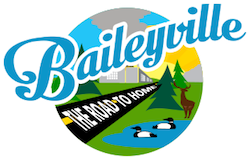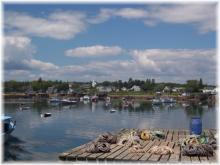Rural Maine Towns Join Forces With Their Own Broadband Utility
Nestled along the south eastern border of Maine are Baileyville and Calais. As rural communities situated next to Canada in the state's "Downeast" region, neither town is on a list of infrastructure upgrades from incumbents. With an aging population, a need to consider their economic future, and no hope of help from big national ISPs, Baileyville and Calais are joining forces and developing their own publicly owned broadband utility.
Baileyville and Calais
There are about 3,000 residents in Calais (pronounced "Kal-iss") and 1,500 in Baileyville, but according to Julie Jordan, Director of Downeast Economic Development Corporation (DEDC), many of those residents are aging and younger people find little reason to stay or relocate in Washington County. The community recognizes that they need to draw in new industries and jobs that will attract young families to keep the towns from fading off the map.
Most of the residents in the region must rely on slow DSL from Consolidated Communications (formerly FairPoint), while a few have access to cable from Spectrum (formerly Time Warner Cable); expensive and unreliable satellite is also an option and there's some limited fixed wireless coverage in the area. A few larger businesses that require fiber optic connectivity can find a way to have it installed, but Julie tells us that it's incredibly expensive in the area and most can't afford the high rates for fiber.
Economic Development Driven
 Organized in 2015, the nonprofit DEDC came together with the focus on recruiting new businesses to the area and to support existing businesses. As DEDC quickly discovered, unless the region could offer high-speed, reliable Internet infrastructure, attracting new businesses and helping existing businesses expand would be extremely difficult. They also determined that new families would not be interested in Baileyville or Calais without high-quality connectivity. "It was a no-brainer," says Julie, "you have to go fiber."
Organized in 2015, the nonprofit DEDC came together with the focus on recruiting new businesses to the area and to support existing businesses. As DEDC quickly discovered, unless the region could offer high-speed, reliable Internet infrastructure, attracting new businesses and helping existing businesses expand would be extremely difficult. They also determined that new families would not be interested in Baileyville or Calais without high-quality connectivity. "It was a no-brainer," says Julie, "you have to go fiber."



